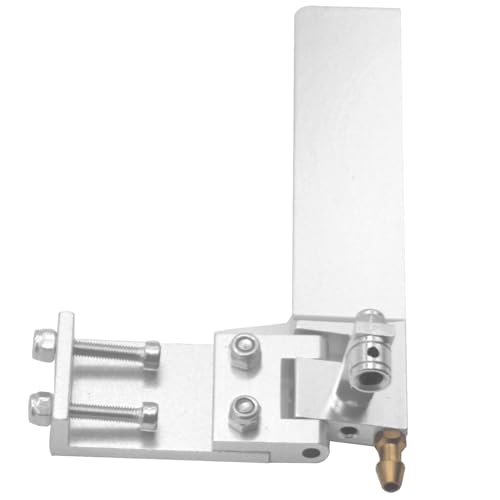Back to the original topic: a 30cc single cylinder motor.
What is everyones preffered crankshaft and induction system layout? There is quite a variety used in current 90 designs.
Crankshaft designs: there are 3 main types that I am aware of.
-The normal system used by most engines smaller than 90's is a single sided crankshaft supported by 2 bearings. In 90's this is used by Rossi, Kalistratov, K&B, OPS and OS (that I am aware of). This type of crank can have a small pin extension of the crank pin which can be used to drive a Picco/OPS style disc valve or a drum valve. The OPS 90 is the only engine I am aware of that has this type of crank and a zimmerman disc induction. I am unsure of the crank layout of the Picco 90, it may be similar. This single sided design has the theoretical disadvantage of the crank counterweight being offset to the centre of mass of the pison and rod, but is the simplest system, and the most prevalent in engines smaller than 90's.
-Double sided crank supported by two bearings. This is used by CMB for their GP/EVO style motors. The two halves are pressed onto a crank pin trapping a rod between the crank halves. CMB also uses full circle cranks and steel rods with needle roller bottom ends, and I suspect the crank design was based upon kart engines where crankcase compression may be considered as very important. The advantage of this design is the counterweighting of the crank can be approximately even about the centre of mass of the piston and rod giving better balance for higher revs. Also this gives a very short compact engine. The disadvantages of this system is it is more complicated and expensive to make (although CMB seem to have made inroads into this) and the two halves can twist out of alignment, and dis-assembly of the engine is more complicated. This type of crank layout suits zimmerman disc on the non-driving end of the crank, but CMB uses a needle roller for that end so that the disc diameter can be kept reasonable.
-Double sided crank supported by 4 bearings. This is used by the A motors for the A-90HP, A-90LS and A100. It uses two crankshafts supported by 2 bearing each and a seperate pin that links them. The 2 bearings on each crank keep them in alignment so the pin is not a press fit, and the crank can be easily pulled apart. The adavantages is a very well supported stiff crankshaft with the counterweighting approximately under the centre of mass of the piston and rod, and the whole system can be pulled apart. The disadvantages is it is probably the hardest system to make, and is complicated, and the engine has 4 bearings to look after. This system uses a disc bolted to the rear crank, but could equally use a floating zimmerman disc.
What are the general feelings of preferences?
Nitrocrazed racing: We aim to please...



































